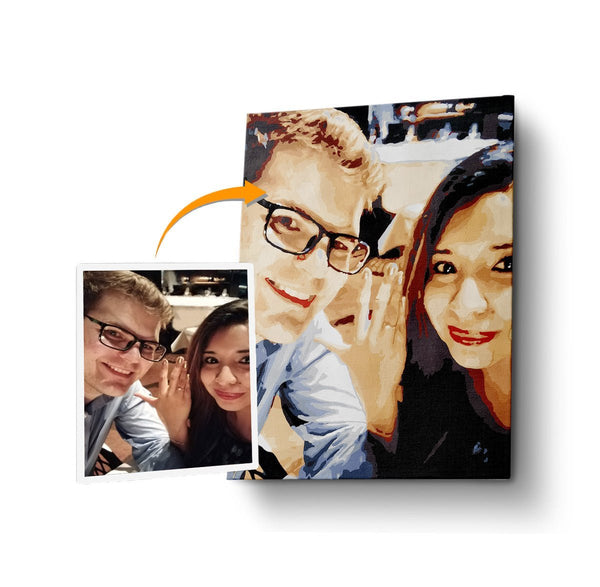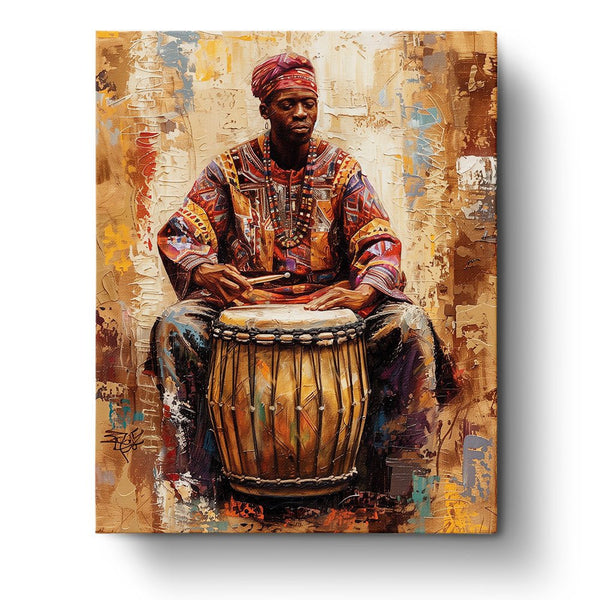
The Art of Painting: Can Abstract Art Be Decoded?
Abstract painting has dominated the art market for more than a century, using simple forms, shapes, and colors to create artworks ranging from Pollock to Picasso. Many renowned abstract paintings have altered our perception of reality. An abstract painting is a representation further than the physical that evokes an artist's inner emotions. An abstract masterpiece, as opposed to realism, allows the observer to connect and reflect on how the art makes him think, feel, and experience.
People frequently misinterpret abstract art because they are seeking something tangible with which they can relate. It is normal for us to want to describe and find the meaning of what we see and feel in the world, therefore pure abstract expressionism, with its unintelligible theme and unexpected patterns, hues, and textures can be difficult. Many people see little distinction between a skilled abstract painter's art and the work of a child, making it much more difficult to discover significance, value, and meaning in it.
Despite being described as lazy, uncreative, formless, and childish, abstract art appears to be one of the most sold-out and sought-after paintings on the market. With this type of art, artists do not just sell artwork, they’re selling an idea and a piece of their soul. In their nonobjective work, abstract artists frequently emphasize visual aspects such as color, shape, structure, texture, and more. This opens the question: can abstract art be decoded? Many people, including art enthusiasts and beginner artists, wonder about this.

The human mind is designed to process sights that are already known to exist confirmed by our eyes. When you see a painting of landscapes and the peaceful great outdoors, your brain signals the recognized elements. Simply said, when our brain is exposed to something familiar, it functions quicker. Have you ever seen an abstract piece of art? What was your initial reaction? Did you feel challenged because you couldn't comprehend the context of the painting? What we see is not a straightforward image, but rather a profound expression of the artist's emotions.
People frequently question, presume, and misunderstand the existence of this type of art. They claim it is unreadable, which is a fairly simplistic assertion. Reading, understanding, and analyzing modern art may help you improve your observation and interpretation skills. Let’s find out more about the topic “can abstract art be decoded?” by reading this article. Just keep on reading to learn more!
What is Abstract Art?
Before we divulge into the topic, “can abstract be decoded?”, let’s learn more about this popular art style first. Abstract art is an art piece that does not strive to accurately describe a physical reality. The word abstraction, technically speaking, implies removing or detaching things from something else.
Abstraction is commonly seen as a sloppy type of art in which artists attempt to avoid genuine interpretation or description of life. Abstraction was closely tied to Impressionism and Cubism, both of which influenced early nineteenth-century European artworks. Abstract art has inspired and greatly influences many elements of reality, particularly in the fields of music, film, and culture in general.
Abstraction has been a foundation of contemporary artists since the early 1900s. This art style is still being explored in a variety of ways today, with numerous artists growing and refining this ever-evolving art form.

What Qualifies an Artwork to be Considered Abstract Art?
Abstract art is a broad and diverse creative style that has impacted several styles throughout history. Abstract art may be described as any art form that does not clearly or precisely portray visual reality, such as painting, sculpture, photography, music, or design.
Abstraction is opposed to figurative art and anything that depicts a subject directly. Wassily Kandinsky, Jackson Pollock, Mark Rothko, and Pablo Picasso are among the artists who have developed new abstract methods or used abstraction in novel ways throughout the previous century.
The absence of figurative and recognizable imagery is a key feature of abstract art. It should be emphasized, however, that 'non-representation' might be minor, substantial, or total. Take a look at the numerous ways painting may be portrayed abstractly: from Salvador Dali's surrealist dream-like works to Willem de Kooning's powerful Abstract Expressionist paintings to Mark Rothko's blocks of colors in his color field pieces.

Understanding Art: Can Abstract Art be Decoded?
Abstract art is a multidimensional style that takes many different shapes. Many people struggle to grasp abstract art because of its vagueness and lack of empirical depiction. Understanding abstract art is not easy for all of us. Some people look at an abstract painting and think, "My child could also do that." What they don't grasp is that the finest abstract painters have exceptional drawing abilities, a perfectly refined knowledge of composition, and deep knowledge of the intricacies of color.
Most abstract painters could create a wonderfully drawn flower or a realistic face, but they don't. Instead, they opt to exhibit their creativity via the creation of a viewing experience that is less constrained by the visual reality of things.
An artist's abstract painting is frequently about much more than what you see on the canvas's exterior. It might be about the technique itself, the artist's use of symbols, or the artist's reduction of anything apparent to its abstract core. As a result, knowing the artist's whole body of work — is extremely beneficial to decoding the meaning and interpreting an abstract artwork. That way, you'll know what paintings came before the one you're looking at, which will help you make sense of it.

Rather than focusing on the accurate portrayal or realistic reproduction of an item, abstract art examines non-objective aesthetic components such as shape, form, color, and line. Artists have employed abstract approaches to investigate themes beyond the canvas and the nature of reality.
Abstraction is sometimes perceived to have a moral component — a belief that was especially common in the late nineteenth and early twentieth centuries, when ideals of mysticism, purification, and organization influenced many artists and their work. Abstract art, as opposed to representational art, is an escape from truth and is greatly subject to interpretation from one viewer to another.
Without a recognizable topic, abstract paintings may be extremely difficult to explain – and downright terrifying. So, perhaps it's simpler to recall the beauty of abstract art this way: all interpretation is correct; there is no right or wrong answer. The painter has used different elements of art to enhance the design of the painting. Again, it is up to the viewer to interpret the painting in their unique way. In other words, have an inquisitive mind and let the artwork lead you wherever it may. That may even alter with each viewing of the same picture.

Consider following this guide so that you could know the answer to the question, “can abstract art be decoded?”:
1. Describe the visual appearance:
What do you notice? Declare the obvious, then delve deeper. Identify the design features and concepts that you perceive. What hues are they? What types of lines are employed? What kinds of shapes? Is it visually appealing? Is the equilibrium symmetrical or asymmetrical? Is there a pattern to the elements?
2. Interpret what you see:
What is the art attempting to convey? How do the elements you notice and explain help to send the meaning? What effect does it have on you? Is there any motion or rhythm? Is it making you joyful or sad? Read the artwork's title. It can help you understand its meaning or purpose.
3. Evaluate what you feel:
Is it moving you in any way? Do you comprehend the artist's intention? Does it strike a chord with you? Not every painting will resonate the same way with everyone.
Key Insights
Abstract art moves every person in different ways, therefore, interpretations are always different. Even the meaning of the artist differs from its viewers. Are you satisfied to know the answers to the topic, “can abstract art be decoded?”





